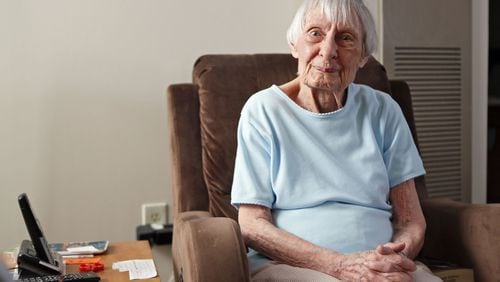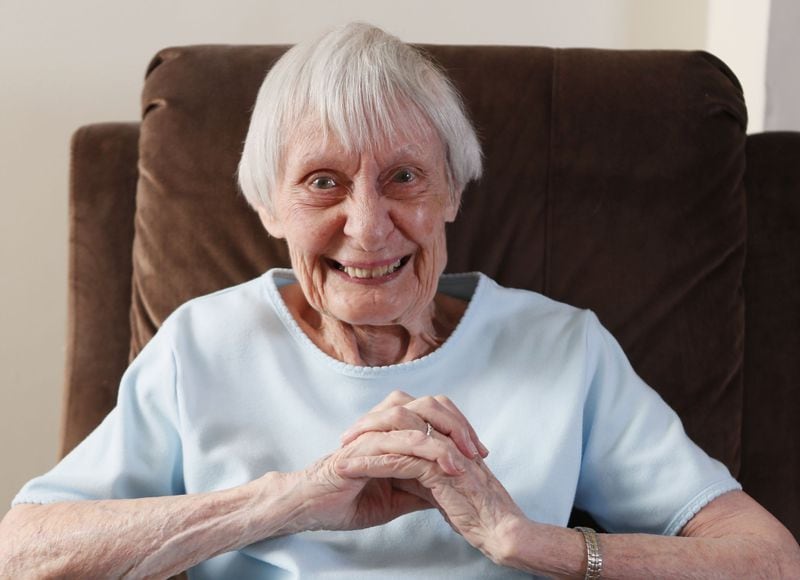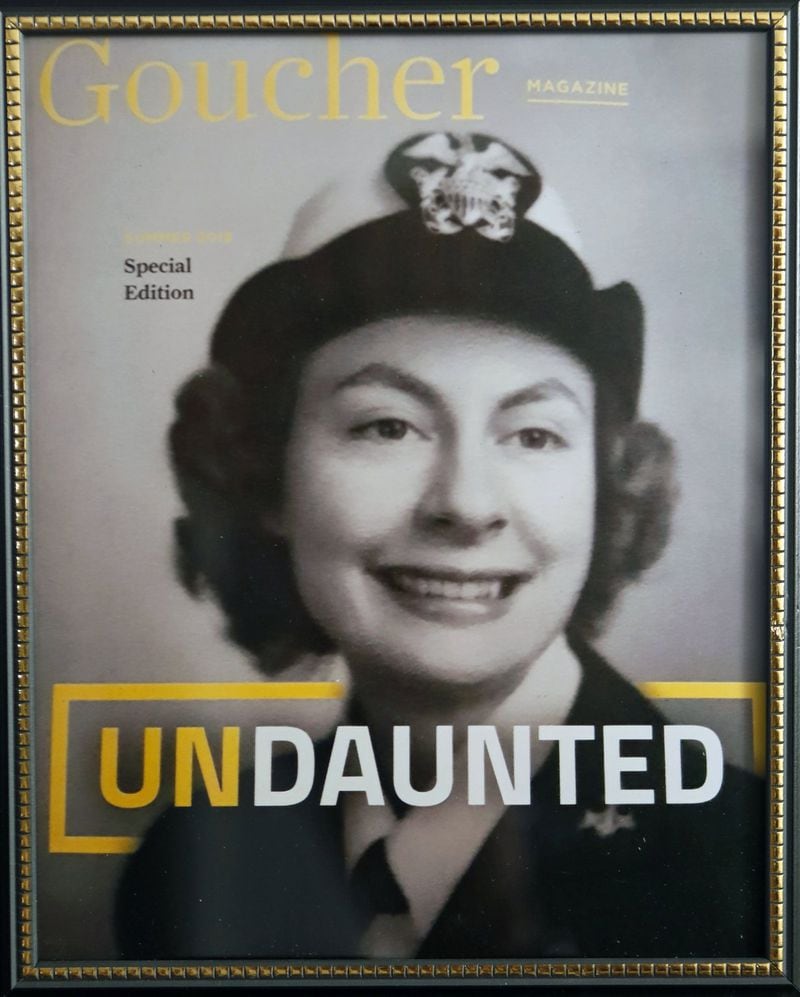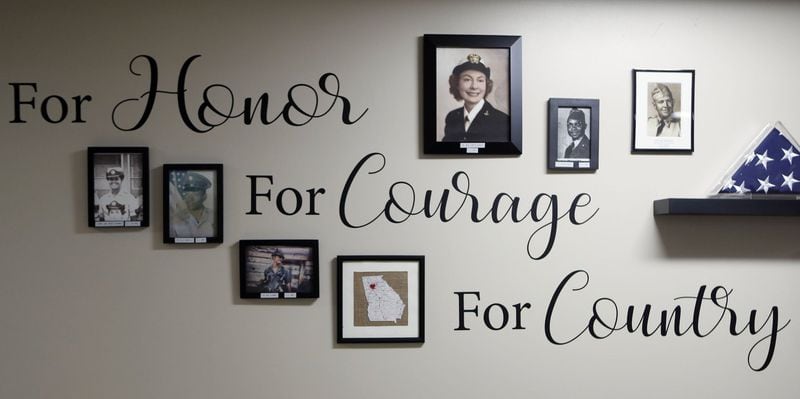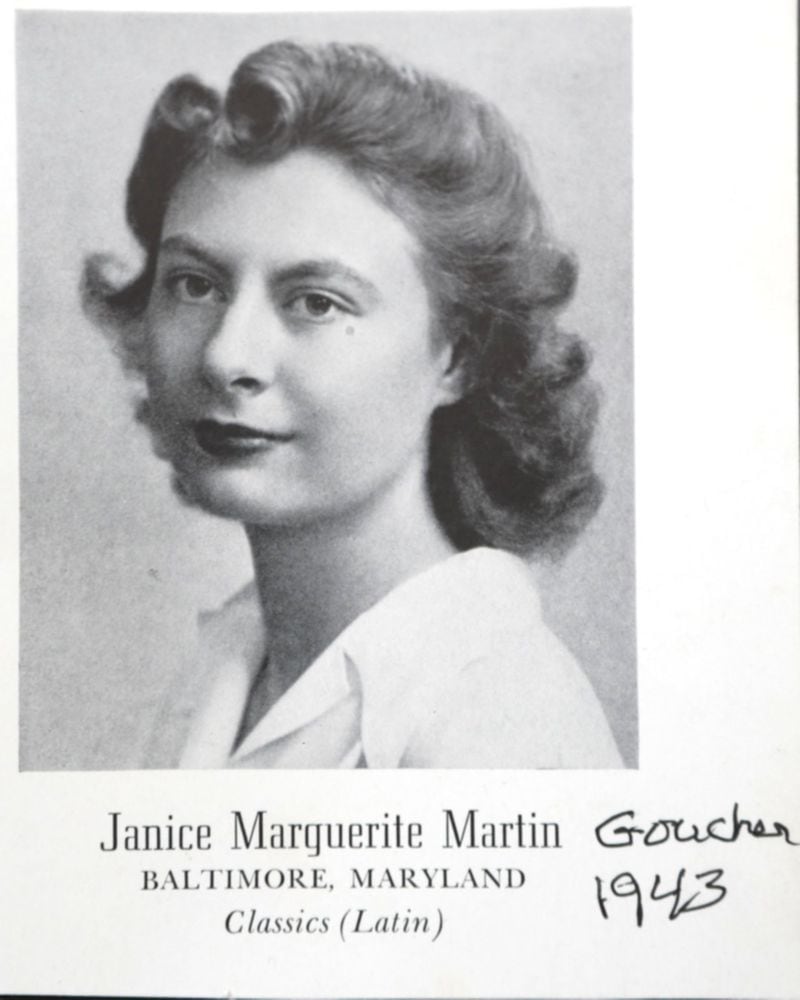In October 1942, a professor at a women’s college in Baltimore asked a young student to step into her office.
“(The professor) closed the door, stood with her back against it…and said, ‘I’m going to invite you into a class given by the Navy…and don’t you dare mention it outside of this room, because, this being wartime, it would be considered treason,’” recalled Janice M. Benario, 95, on a recent morning, lounging in her living room at a Decatur retirement community.
Benario said she did as the professor asked; she kept quiet. As was advertised at the time on World War II-era posters: “Loose Lips Sink Ships.”
Allied ships in the Atlantic were falling prey to German U-boat torpedoes, and little did Benario know at the time, she’d very soon be working as part of the Navy’s Enigma code-breaking team that would contribute to the Allied victory in Europe.
Benario, a Baltimore native who has been living in Atlanta since 1960, was one of four from Goucher College selected and accepted into the Navy program. Benario said the college was one of seven women’s learning institutions in the country the Navy had selected candidates from to study cryptology, the art of writing and breaking codes.
During World War II, the women’s branch of the U.S. Naval Reserve was known as WAVES: Women Accepted for Volunteer Emergency Service.
MORE: Georgia executive jet carries accused Nazi war criminal back to Europe
When she looks back on it, Benario thinks it wasn’t necessarily a specific skill she possessed which led elite, in-the-know faculty to select her for this honor. Rather, it was that she seemed like “someone to be trusted.”
They were right about Benario; she kept her enormous secret for a very long time. In fact, husband Herbert Benario didn’t learn of her service in Washington, D.C. until 25 years into their marriage and nearly 50 years after the war was over.
After all, what went on inside that office was, well, classified.
“What that office was dealing with was messages from the German high command to the U-boats, the submarines, and that material was not to be made public…I never told my family a word and never mentioned it around the college,” Benario said. “I guess we proved that women could keep a secret.”
Benario graduated from Goucher in 1943 and was inducted into the Navy for eight weeks of training in the summer of that year. She later was ordered to report at a naval communications annex in Washington D.C., where she and other women conducted their top-secret work.
Inside of a defunct school building taken over by the Navy–windows to the outside world taped up with cardboard–Benario worked with others.
"I remember there was cardboard over those windows so no one could see, and no one could walk in unless they knocked and someone let them in," she said.
Benario read messages "between German high command and U-boats…my job was kind of as a secretary, passing messages."
MORE: Join the AJC in recognizing the nation's servicemen and women this Veterans Day
She said that every morning, between 7:30 and 8 a.m., she and fellow codebreakers "would get together an envelope of the messages we had translated for the day…and every day around that time there would be a knock at the door, and here was a Naval officer from the main Navy department with a big, leather pouch, which he could lock and unlock. We took our envelope, put it in that bag, and he locked it up, got in his car and drove it to the main Navy department."
By the end of World War II, approximately 86,000 women had served in WAVES. A large portion of the jobs in the program was clerical and secretarial in nature, however, many women performed positions in areas such as photography, intelligence and aviation mechanics. And although in the beginning African-Americans were not included, by the end of 1944, there was one black woman for every 36 white women enlisted in WAVES.
Benario was on active duty from 1943-1946 and was discharged as a lieutenant junior grade.
She then went on to get her M.A. and Ph.D. degrees at Johns Hopkins University. That’s where she met future husband Herbert Benario. They were wed in 1957 and moved to Atlanta in 1960, where she was a professor at Georgia State University until 1984.
It was around the late ’80s when her big secret came out.
“My father didn’t even learn about it until 1989,” said son, Fred Benario.
Herbert Benario, now 89, recalled that he was reading a book about secret signals used during World War II, when he flipped a page and saw his wife’s photo among others who were part of the codebreaking teams.
“When I got the book and turned the pages, there was a two-page picture of everybody involved, and there she was in the second row,” Herbert Benario said, laughing. “That’s precisely how I found out.”
Son, Fred Benario, said he was amazed anybody could keep a secret like that for as long as his mother had.
“I thought, ‘Wow, that’s pretty impressive that she could keep that secret,’” Fred said. “If the government told me not to do something, I’d probably be looking for ways to do it anyway…but, that generation, during wartime, if the government said, ‘Don’t do something,’ people automatically wouldn’t do it.”
Fred said he’s proud of his mother, who was also one of the first women in the Navy to be named an officer.
“(My mom) was at a pretty well-respected women’s college, and she was bright, and she’d always been a pretty quiet person, so the professors who taught her probably saw that she was not some kind of loudmouth who would just spout off at the drop of a hat,” Fred said.
Added Fred: “Back at that time, women did not have the opportunities they do now…and, she was a woman who had a Ph.D. in the early ’50s and was one of the first female officers in the navy, and she was part of this top-secret program…I mean, she’s pretty impressive.”
